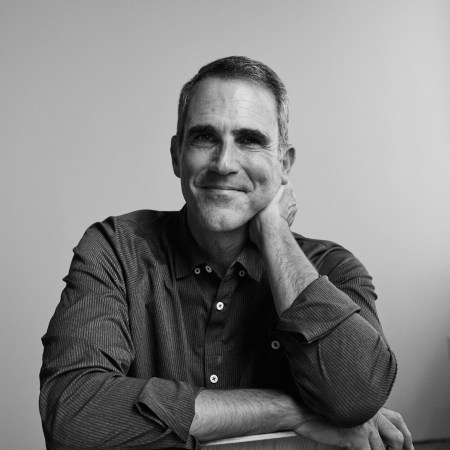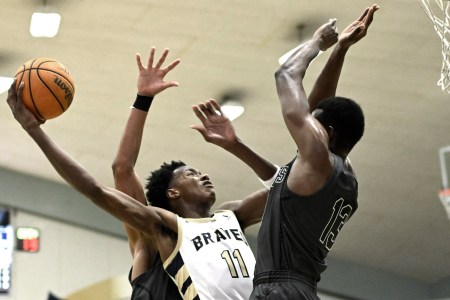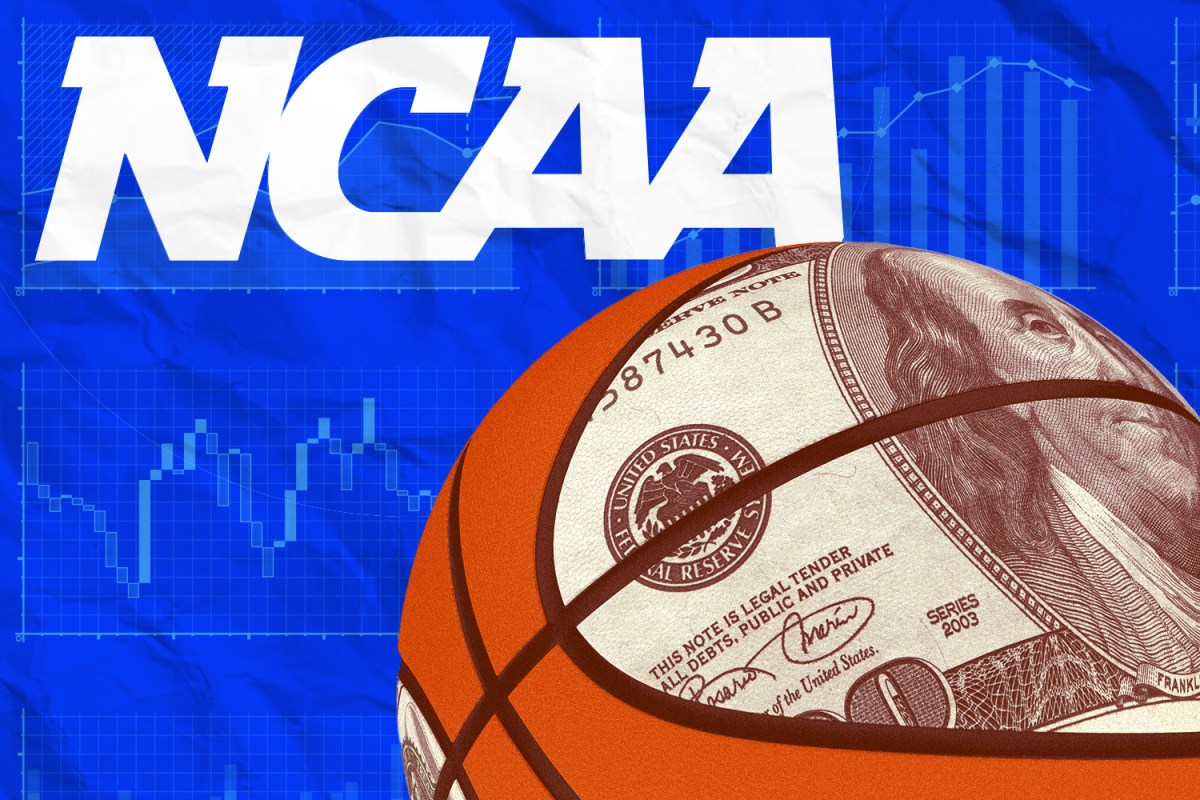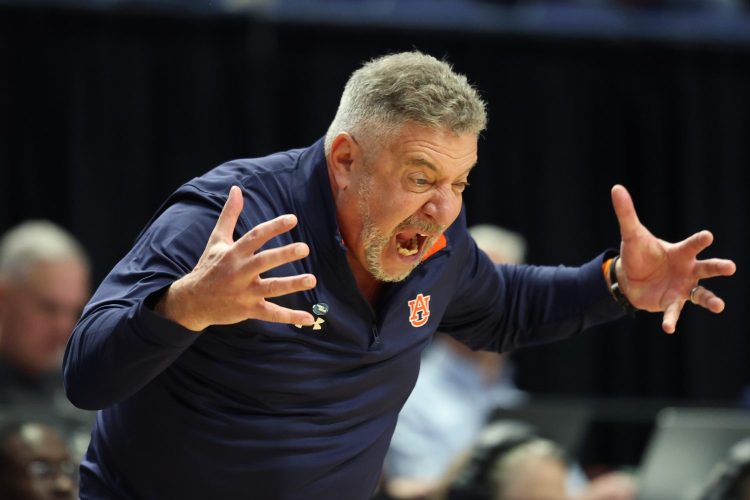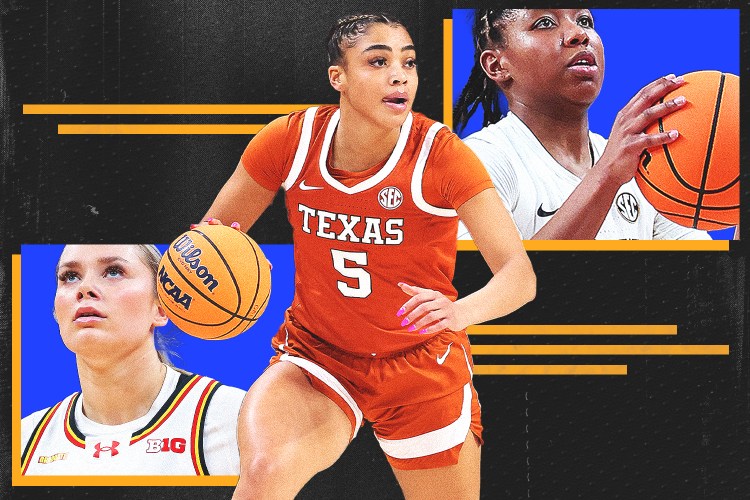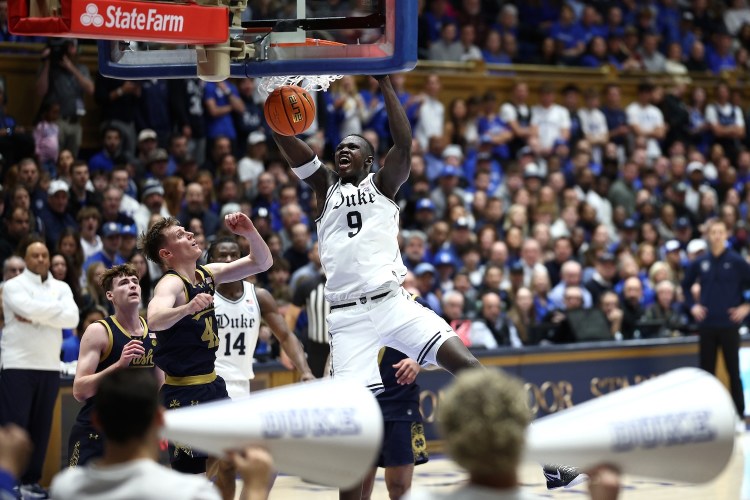To put it mildly, the NCAA, and college sports in general, is going through an unprecedented disruption. The groundbreaking settlement reached with the the plaintiffs in the House vs. NCAA case, among several others, is (hopefully) headed for final approval from U.S. District Judge Cladia Wilken. Even if that approval is rendered, it will not solve all of the thorny issue facing college athletics. But it will be an important step forward.
Charlie Baker has only been president of the NCAA for about 20 months, but he proved in his past role as the Republican governor of Massachusetts that he is effective at bringing together disparate viewpoints to build consensus and move an agenda forward. His current job, unlike his previous one, does not come with any direct power to affect change, but it does come with a visible pulpit and a high level of influence. Baker is doing his best to wield that influence in a way that will, at long last, move the NCAA into a more stable future.
Last Friday, Baker spoke exclusively with Hoops HQ Editor-in-Chief Seth Davis about where the NCAA is at this moment, how it got here, and what’s ahead. The topics ranged from the efforts to get antitrust legislation from Congress, what to do about NIL collectives, why the NCAA doesn’t want athletes to become employees, whether the so-called football superleague is a realistic possibility and whether the NCAA men’s and women’s basketball tournaments should expand.
Here is a transcript of that conversation, which has been edited for length and clarity.
SD: So it looks like we are coming down the final stretch at least as far as the House case is concerned. As NCAA president, how much of your time is spent on this?
CB: I would say, over the course of the past 19 months that I’ve been here, it’s consumed somewhere between 10 and 20 percent of my time, depending upon the day. Sometimes as much as 30 or 40 percent.
SD: I actually thought it would have been higher.
CB: Well, that’s one of many lawsuits that we face (laughs). If you ask me how much time I spent on legal issues, we probably get more up to sort of 40 or 50 percent. The other thing to remember is the opportunity it creates to deal with what I would describe as the number one challenge we face, which is coming up with a program and a structure that is approved by a court to provide additional benefits and revenue sharing to student athletes.
SD: A lot of people are actually okay with the whole pay-for-play thing. It’s long overdue. But the reason things are so chaotic is that, instead of making these changes pro-actively, the NCAA had to be forced into making them through lawsuits, leaving everyone unprepared. How did the NCAA allow things to get to this point?
CB: Part of it is the incredible distribution that exists within college sports. You’ve got a bunch of schools that spend $300 million on sports and you got a bunch of schools still in Division I that spend maybe 10. And then you’ve got all the schools in D2 and D3 that spend somewhere in between. When you’re talking about 50 states and 1,100 schools and 500,000 student athletes, the idea of applying a broad brush to any of it seems really complicated.
SD: Judge Wilken granted preliminary approval to the settlement after declining to do so in round one. What’s your level of confidence that you’re going to get the final approval you need to start moving forward?
CB: She asked what I would describe as some really good clarifying questions in her initial hearing and she sent us back to the drawing board to clear that up. And I think the work that was done during that period was helpful and appropriate and made the final presentation that was presented by the plaintiffs a lot clearer. I admit that, you know, we’ll see (about final approval), but this thing starts in July, so it’s important we make decisions based on the assumption it could happen.
SD: What are the next steps as far as Congress is concerned?
CB: Once we get the settlment in place, we’ll really be looking for some way to deal with the 35-plus states that have different standards, which makes it hard to create a level playing field. The other thing is the employment issue. When I talk to people in Congress, it always sounded to me like the employment piece was more about a means to an end as opposed to an end. One of the things we’ve tried to do with this settlement is create a mechanism that makes it possible for schools with the resources, with the high resources, to be able to support and compensate student athletes for their time and their participation in their name, image and likeness. That was the primary objective of a lot of those conversations.
SD: Well, you’re going to have to dumb this down for me, because I’m not a lawyer. But it seems that the basic ask of Congress is some level of antitrust exemption that would allow college athletics to move forward without making the athletes employees. That means they can’t unionize and they can’t collectively bargain. It just seems to make basic sense that they should be able to do that.
Let me just give you one example. With this House settlement, the revenue the athletes are getting is 22 percent. You can look at any pro league around the world and you’d be hard-pressed to find a union agreement that only gives the players 22 percent. So now this could potentially open up a whole new set of legal challenges to allow athletes to advocate through collective bargaining to get a better deal. So the question is, why do you need an antitrust exemption, and why is it wrong to make them employees and allow them the power to collectively bargain?
“Remember, 99 percent of these kids, even the ones who play at the most high-end programs, the end game is graduation and a launch into something other than being a professional athlete.”
CB: Well, first of all, the 22 percent number was agreed to by the plaintiffs because it only represents a piece of what the schools actually spend and invest in their student athletes. Pro teams don’t pay for housing. Pro teams don’t pay for food. They don’t pay for tuition. One of the reasons that 22 percent is there is because it was deemed somewhere between 25 and 27 percent of those athletic budgets that we’re talking about. So the total investment here is a lot closer to 50 percent, which puts it much closer to the number that you’re referencing. That’s point number one.
Point number two is for professional athletes, that is their career and their job. Remember, 99 percent of these kids, even the ones who play at the most high-end programs, the end game is graduation and a launch into something other than being a professional athlete. One of the reasons I like having the NIL piece inside the four walls of the institution is I’m hoping there will also be commitments around academic performance and professional development as well as athletic performance.
SD: The fear of going to all of this revenue sharing is that it would mean fewer scholarship dollars and participation opportunities for the so-called non-revenue sports. Do we just need to brace ourselves for that?
CB: This was one of the reasons why the membership was slow to move to this type of a model in the first place. The House settlement adds about 750 new scholarships, so there’s a lot of new scholarship opportunities there. The other thing I would say is, I think we need to to think a little differently about the so-called non-revenue sports. One of the things I decided to do when I got to the NCAA was create a fan database. Everybody will watch the Olympics all day long, right? Those are the same people, in most cases, who are performing in college sports. But I don’t think we’ve ever really tried to sort of push the push the envelope on this one and create the audience for a lot of those other sports that is clearly there when people know about it.
SD: Are collectives going to continue to function in this new world? You made some comments recently that indicated that you’re not a great fan of them.
CB: I think they’re still going to be part of the show, but I do think part of the reason for the rise of the collectives was the lack of participation by the schools. I think the schools, at the end of the day, ought to be the primary relationship between the student-athlete and any sort of rev share based on NIL. I don’t think the collectives were ever going to be able to have what I would describe as a development plan for a young person about what it is they actually want to get out of their academic experience and their athletic experience, because it’s kind of a transactional model.
SD: I don’t have to tell you, even though you just got there, that enforcement has not been a comfortable thing for the NCAA. It’s very, very difficult to do. You don’t have traditional subpoena power or anything like that. And there’s, I think, a very cogent argument to make – and frankly, I have made it – that the NCAA should just get out of the enforcement business. Let the schools and the conferences do that, and let the NCAA do what it does best, which is run championships as well as any organization in the world. Am I wrong about that?
CB: I think the whole question about how and where enforcement takes place and what it looks like is going to go through a massive reconsideration. There’s a lot of architecture that’s associated with the current model that, just by definition, goes away the minute this new settlement becomes an injunction. But I don’t disagree with you. I think the enforcement piece is absolutely up for grabs in terms of what makes the most sense going forward.
“I know people think this whole thing is just all about money, but I think a lot of the colleges and universities believe there’s something bigger at stake here.”
SD: I’m sure that you’ve seen these proposals floating from private equity folks around creating a Super League of only the football teams, where you have 60 or 70 schools banding together and having promotion and relegation like the Premier League. Even if this is a good idea, is this even a remotely feasible thing? Do you think it might actually have some traction?
CB: You know, schools generally speaking make decisions on very long time frames. They’re not usually three to five years, which is how private equity works. So that, all by itself, creates kind of a disconnect. The other thing is, the schools would tell you that one of the reasons everybody loves college sports is because of the sense of community it creates. My kids play D-III football. It’s not like going to watch Alabama play LSU, okay, but it’s still a community event. That community event is really important to the organizations that put them on. I know people think this whole thing is just all about money, but I think a lot of the colleges and universities believe there’s something bigger at stake here.
SD: Last thing. Hoops HQ is a basketball site, so I’ve got to ask you about NCAA Tournament expansion. Would you like to see it happen? And do you think it’s going to happen in the near term?
CB: I think there’s a real opportunity there to do something modest. Remember, the calendar is really defined, right? We have to finish before the Masters, and we can’t start until after the conference tournaments are over. So there’s not a lot of extra days in there. And I think for both the men’s and the women’s tournament, whatever we do here would have to be done within the frame that’s already available. Do I think it’s possible to come up with something where we could make this work? I think it certainly is possible. We’re working on it, but I don’t think you’re going to see dramatic expansion.
